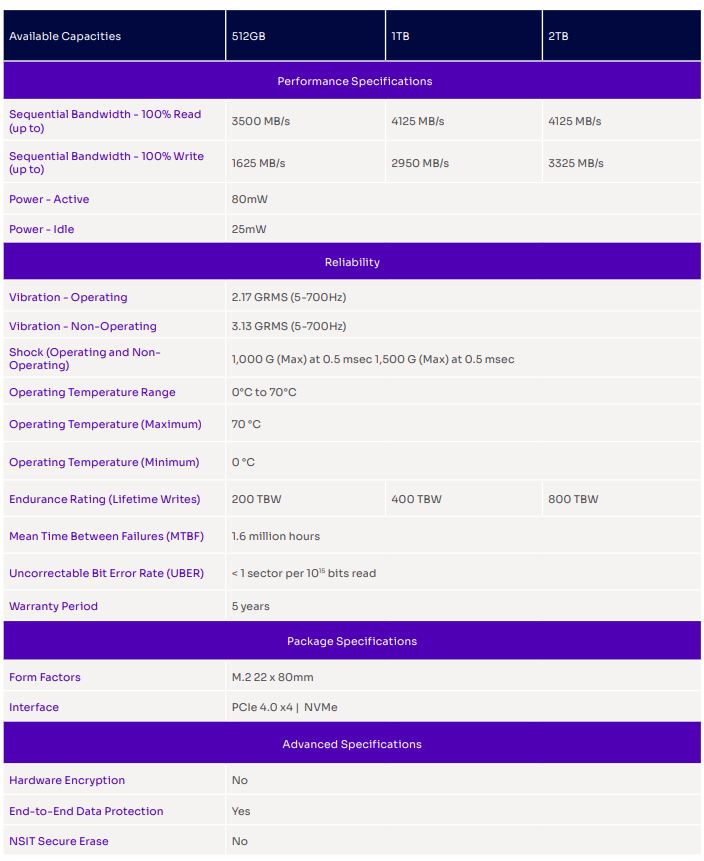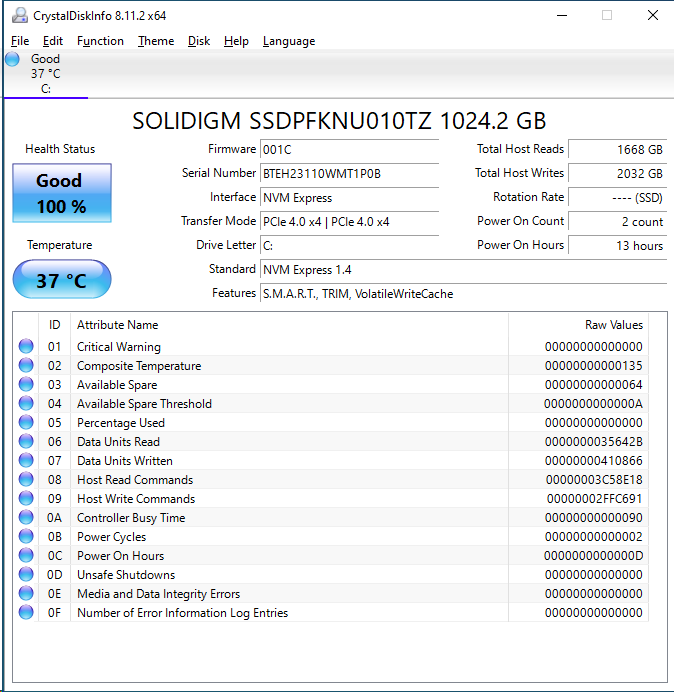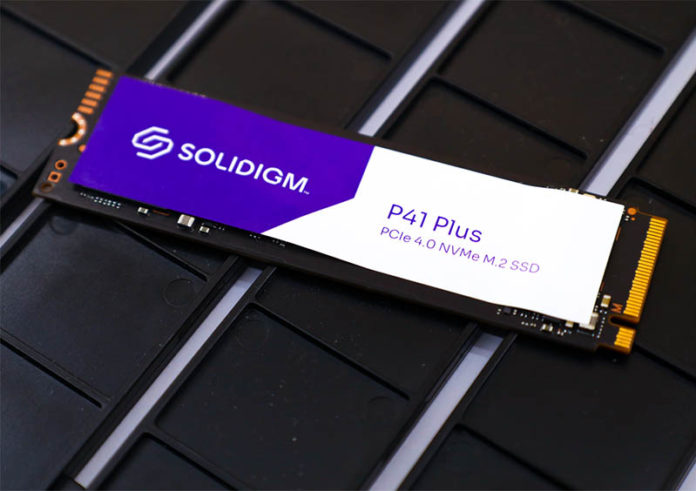Today we are taking a look at the Solidigm P41 Plus 1TB NVMe SSD. Solidigm is perhap still not a household name, but it is the result of the Intel selling its SSD business to SK hynix and Solidigm is the resulting subsidiary of SK hynix for SSD products. The last SK hynix drive we reviewed was the Platinum P41, and while today’s drive shares the “P41” branding almost everything else about the drive is different. While the Platinum P41 targets the high end, the P41 Plus is targeted at the value segment of the market.
Solidigm P41 Plus 1TB NVMe SSD
The Solidigm P41 Plus 1TB comes in a single-sided M.2 2280 (80mm) form factor.

Beneath the bold Solidigm sticker is a very basic set of components. The P41 Plus uses an off-the-shelf Silicon Motion SM2269XT controller; this is in stark contrast to the Platinum P41, which uses SK hynix’s in-house Aries controller. The SM2269XT is designed for DRAM-less drives, and DRAM-less is exactly what we have in the P41 Plus. If you want to learn more about DRAM-less SSDs see our piece on Host Memory Buffer NVMe SSDs. Additionally, where the Platinum P41 uses 176-layer TLC, the P41 Plus uses 144-layer QLC. All in all, this is a much more moderate setup and lends itself to the lower-rated performance of this drive, which we will see later on.

As a single-sided drive, the back is bereft of any components. It has the logos and regulatory markings everywhere though!
Solidigm P41 Plus SSD Specs
The P41 Plus line of SSDs is available in sizes between 512 GB and 2 TB.

Today we are looking at the 1TB drive, which boasts 4125 MB/s sequential read and 2950 MB/s sequential write speeds. The P41 Plus is a PCIe 4.0 drive, but the rated sequential read speed just barely exceeds the interface limits for a PCIe 3.0 x4 slot. The short version of the story is that this drive is squarely targeting a lower-end performance segment than many other PCIe Gen4 SSDs we have tested.
At 400 TBW, endurance is a challenge for me. I have stated my opinion in the past that 600 TBW should be the minimum endurance target for a 1TB drive, and I stand by that opinion today. That is not to say that the P41 Plus is alone in its lower endurance; the recently reviewed HP FX900 1TB drive has identical endurance and warranty specs. Unlike the HP FX900, the P41 Plus is a QLC-based drive, somewhat explaining its lower endurance rating. In reality, most users are still unlikely to subject a 1TB SSD to 400 TBW of writes over any reasonable time scale, but with alternatives in the market offering higher endurance ratings at similar price points, it is something I hold against a drive. At least the 5-year warranty is industry standard for a quality drive, so that part is nice to have.

CrystalDiskInfo can give us some basic information about the SSD and confirms we are operating at PCIe 4.0 x4 speeds using NVMe 1.4. Also of note, The P41 Plus is a 1024GB drive and not a 1000GB drive.
Test System Configuration
We are using the following configuration for this test:
- Motherboard: ASUS PRIME X570-P
- CPU: AMD Ryzen 9 5900X (12C/24T)
- RAM: 2x 16GB DDR4-3200 UDIMMs
Our testing uses the Solidigm P41 Plus 1TB as the boot drive for the system, installed in the M.2_1 slot on the motherboard. The drive is filled to 85% capacity with data and then some is deleted, leaving around 60% used space on the volume.
Next, we are going to get into our performance testing.





I say this would be a good drive for a PS5 and it should be marketed as so, basic home/office pc use does not neccessitate a Gen4 NVME drive
The one place I could see Gen4 coming in handy with drives like is when you only have 2 PCIe gen 4 lanes. It’s only a matter of time before we see budget devices with m2 slots with only 2 PCIe Gen4 lanes. This is already common practice with Gen 3 m2 slots when PCIe lanes are scarce.
Did you test using the driver for better performance? They say that the driver allows the cache to work more efficiently, another review I saw that did test with the driver got 250-300MB/s when partially full, which is obviously still not great but is better.
Imo this drive is great for a games drive, 200MB/s is still way higher than most people’s internet (gigabit = 125MB/s) so for downloads and reading there wouldn’t be any issues.
The price is what makes it a great games drive, I just picked up a 2TB drive for $110 a few weeks ago and most 1TB drives were around $80, and I sure as hell will never use anywhere close to its rated write speeds and 200MB/s is more than quadruple what my internet speed is.
A lot of people get caught up on the numbers when any non-professional workload wouldn’t see any difference between this drive and a good SATA SSD, and I hope it drops even further in price to show what QLC can really be good for.
This review was published in Nov 2022 and you called $72 “very cheap”. Meanwhile, SSD prices are continuing their skydiving journey. Just a few days ago, the PCIe Gen 4 Kingston NV2 1TB drive was on sale for only $53 on Amazon and Newegg. That is 25% cheaper for the same capacity. Gen 3 drives like PNY CS1030 1TB are also dropping to $50~$55. But Solidigm P41 Plus is still standing at above $70. This makes the Solidigm P41 Plus a bad value.
I think it is really best to only consider the general competition bracket based on features (DRAM vs HMB, QLC vs TLC), but not to take value into consideration when making conclusions, because pricing changes too much to be a lasting metric. The value proposition should be left to the read to decide at the time of purchase.